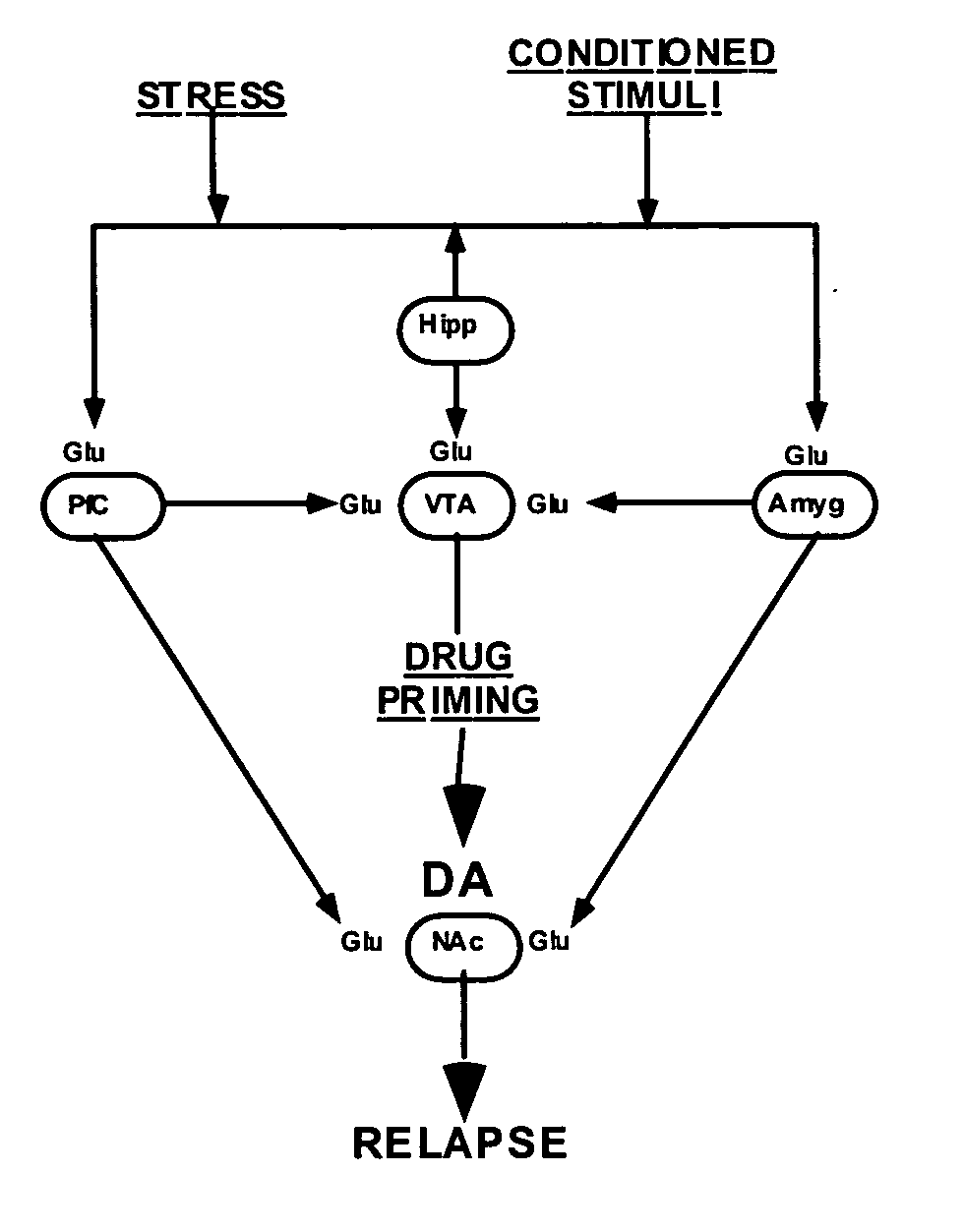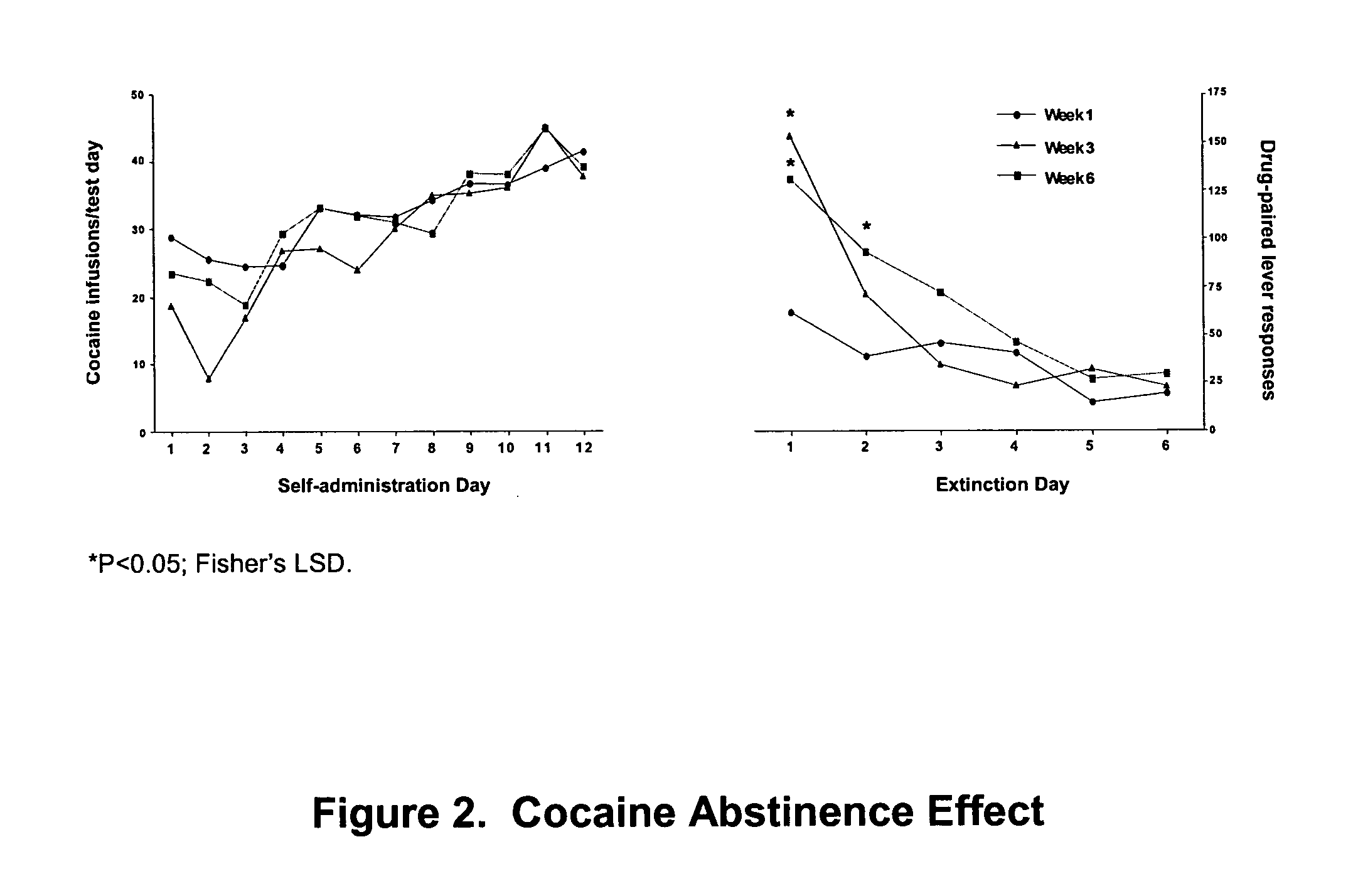Methods for treating drug addiction
a drug and alcohol addiction technology, applied in the field of drug addiction, can solve the problems of little information that has translated into effective treatment strategies, troublesome problems, and addiction to drugs and alcohol, and achieve the effects of inhibiting addiction-related behavior, modulating the activity of a polypeptide, and reducing the risk of drug addiction
- Summary
- Abstract
- Description
- Claims
- Application Information
AI Technical Summary
Problems solved by technology
Method used
Image
Examples
example 1
Identification of Extinction / Withdrawal Differences in Gene Expression in the Nac Shell and Other Brain Regions During Prolonged Abstinence Using Gene Expression Profiling
[0187] The advent of oligonucleotide arrays increases the feasibility of forward genetic approaches to identify gene regulation in studies of complex behaviors. This technology replaces more cumbersome methods of subtraction hybridization and differential display with the advantage of profiling thousands of genes simultaneously. FIG. 4 illustrates 2 candidate genes identified in our preliminary studies from contralateral NAc shell tissue samples taken from animals used in the extinction studies described above. These genes were selected by comparing 1-week extinction training and 1-week withdrawal groups according to stringent criteria described in the Research Design and Methods section. The top panel illustrates a 3.7-fold difference in expression of a retroviral derived gene retroposon (see Table 1). This gene ...
example 2
Analysis of Western Blots
[0203]FIG. 7 demonstrates that protein levels of gb2 are increased in the nucleus accumbens shell of the 1 week extinction group compared to control animals. This result supports the microarray results and gives stronger evidence for the role of this protein in drug-seeking. In contrast CB-1 protein levels are increased in the nucleus accumbens of the 1 week withdrawal group compared to controls (FIGS. 8-10), though the microarray results showed a decrease. Nevertheless, the results suggest an important role for CB-1 in drug-seeking.
PUM
 Login to View More
Login to View More Abstract
Description
Claims
Application Information
 Login to View More
Login to View More - R&D
- Intellectual Property
- Life Sciences
- Materials
- Tech Scout
- Unparalleled Data Quality
- Higher Quality Content
- 60% Fewer Hallucinations
Browse by: Latest US Patents, China's latest patents, Technical Efficacy Thesaurus, Application Domain, Technology Topic, Popular Technical Reports.
© 2025 PatSnap. All rights reserved.Legal|Privacy policy|Modern Slavery Act Transparency Statement|Sitemap|About US| Contact US: help@patsnap.com



